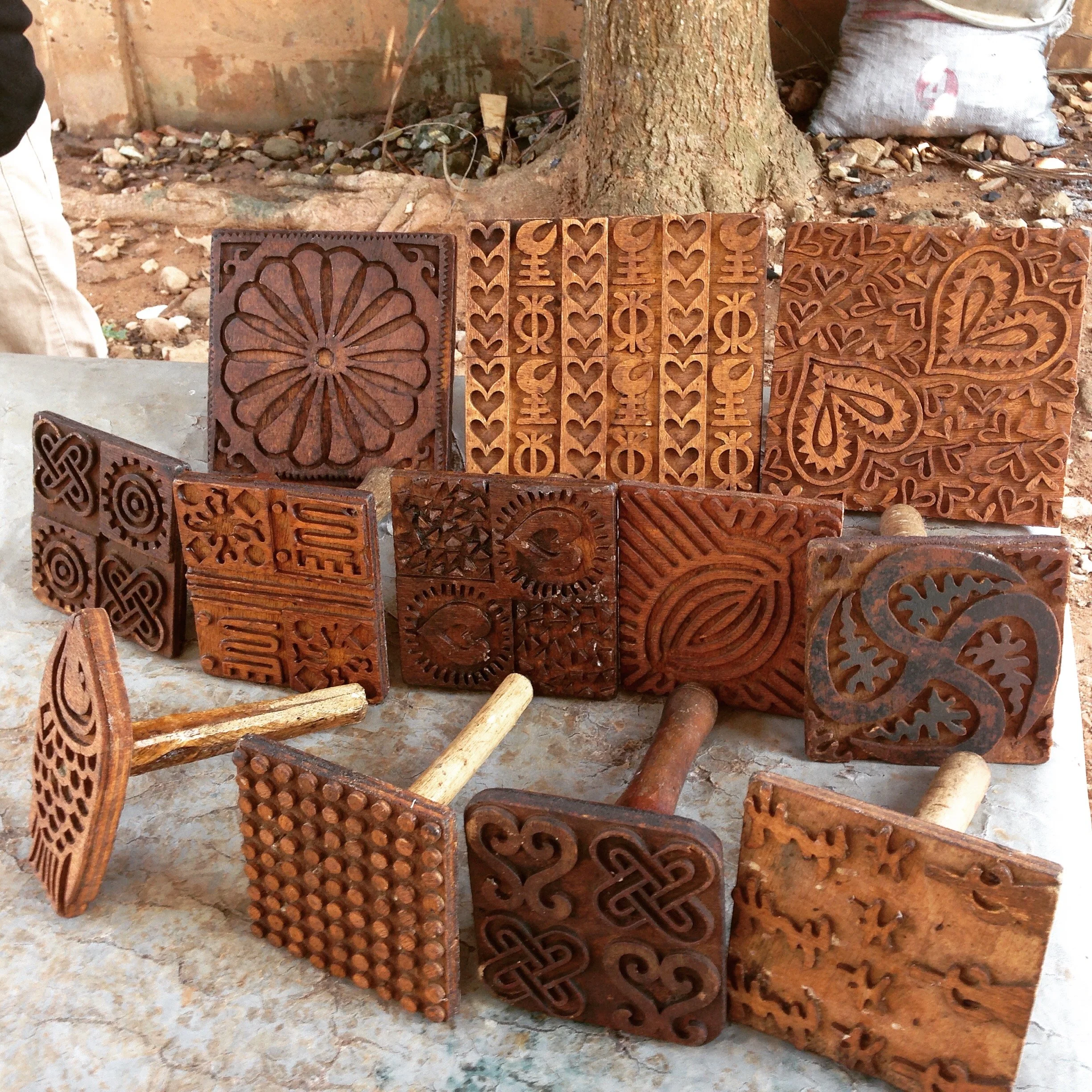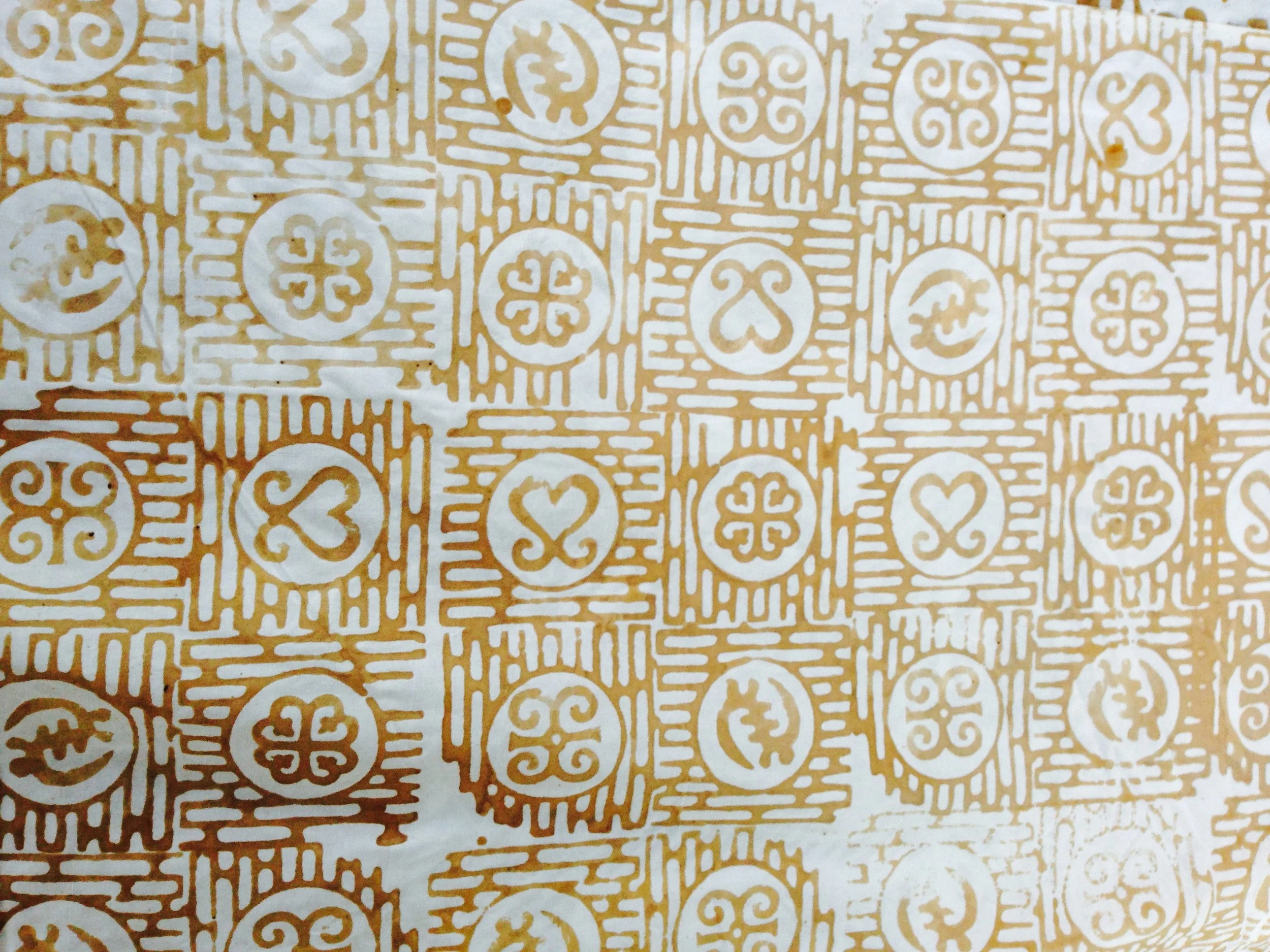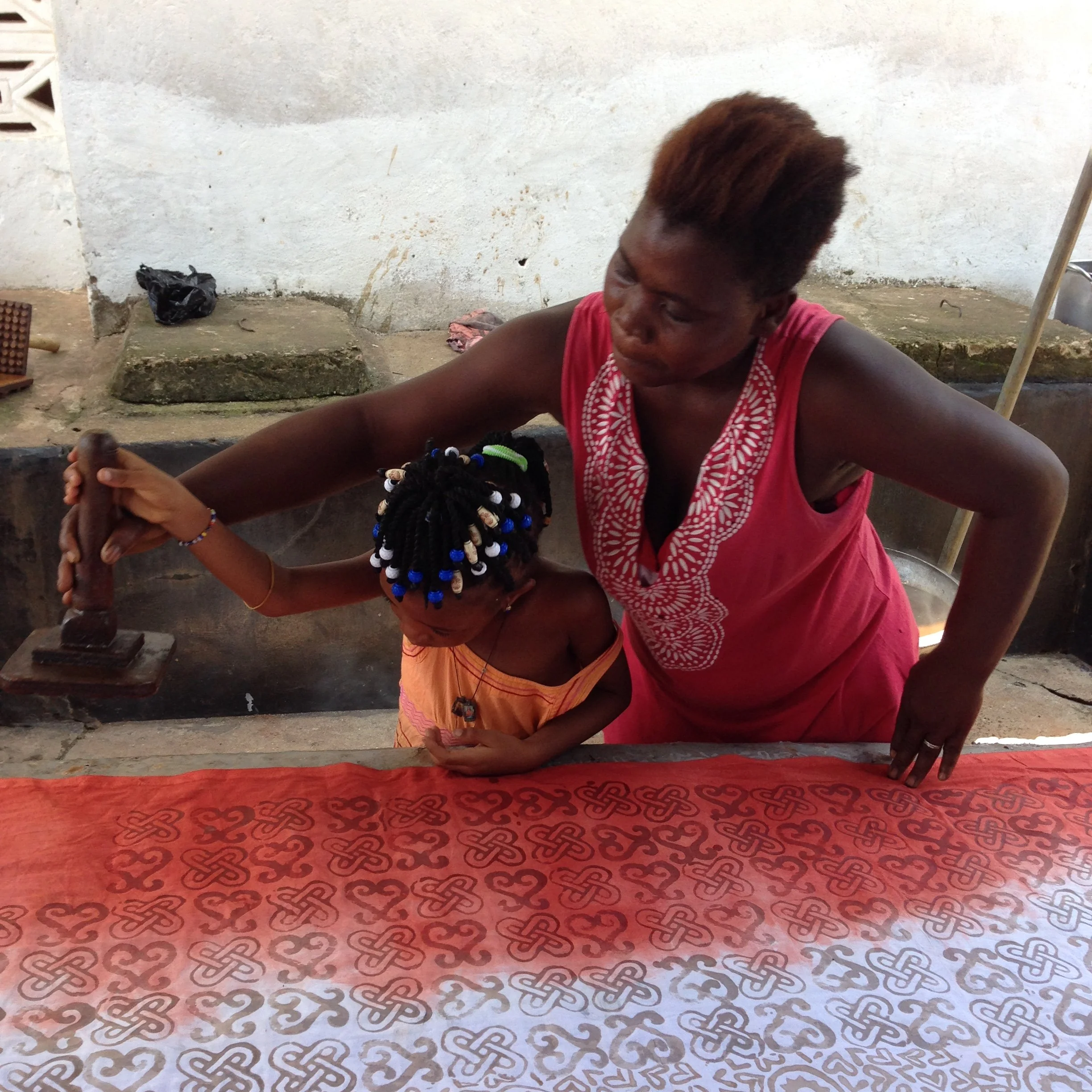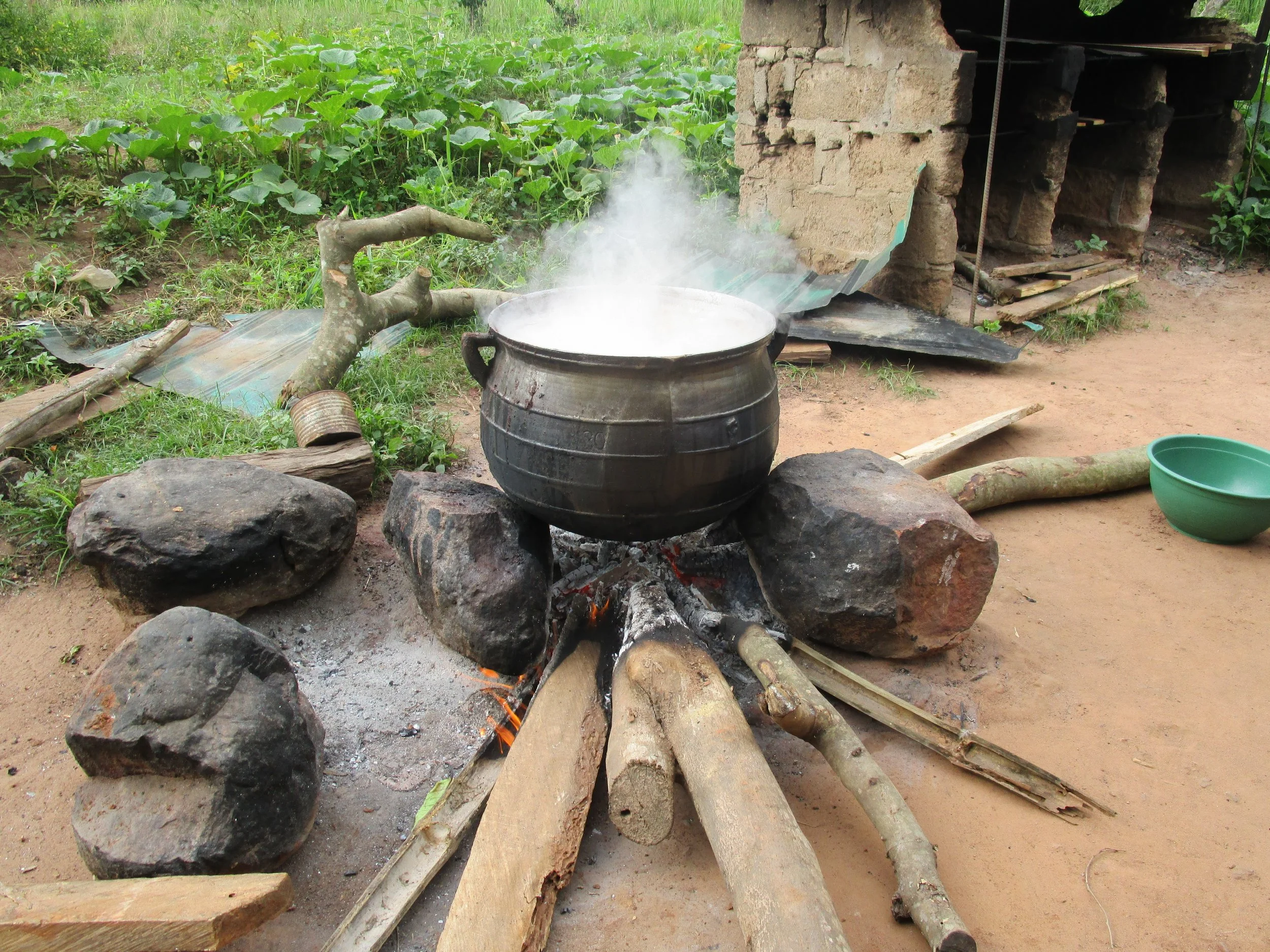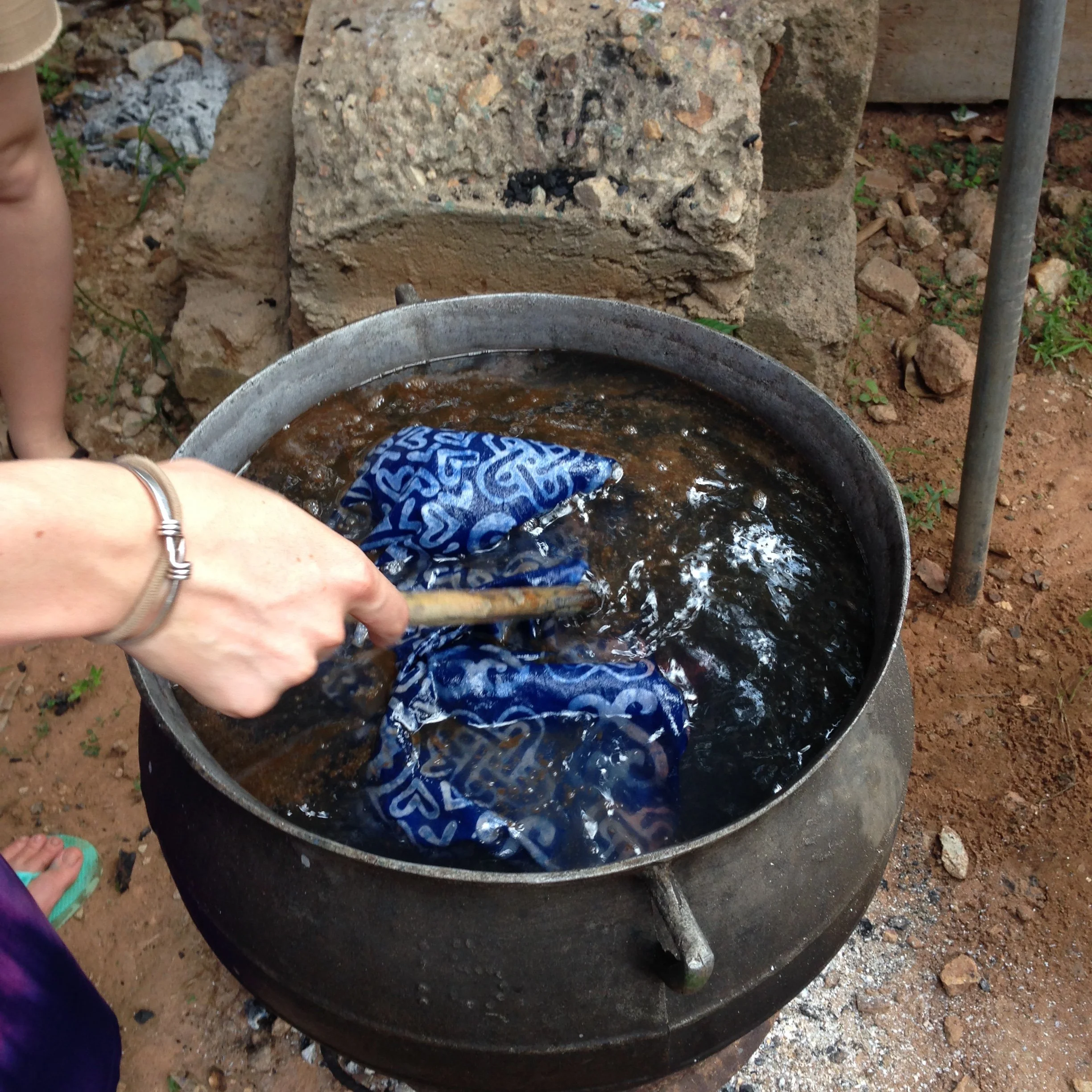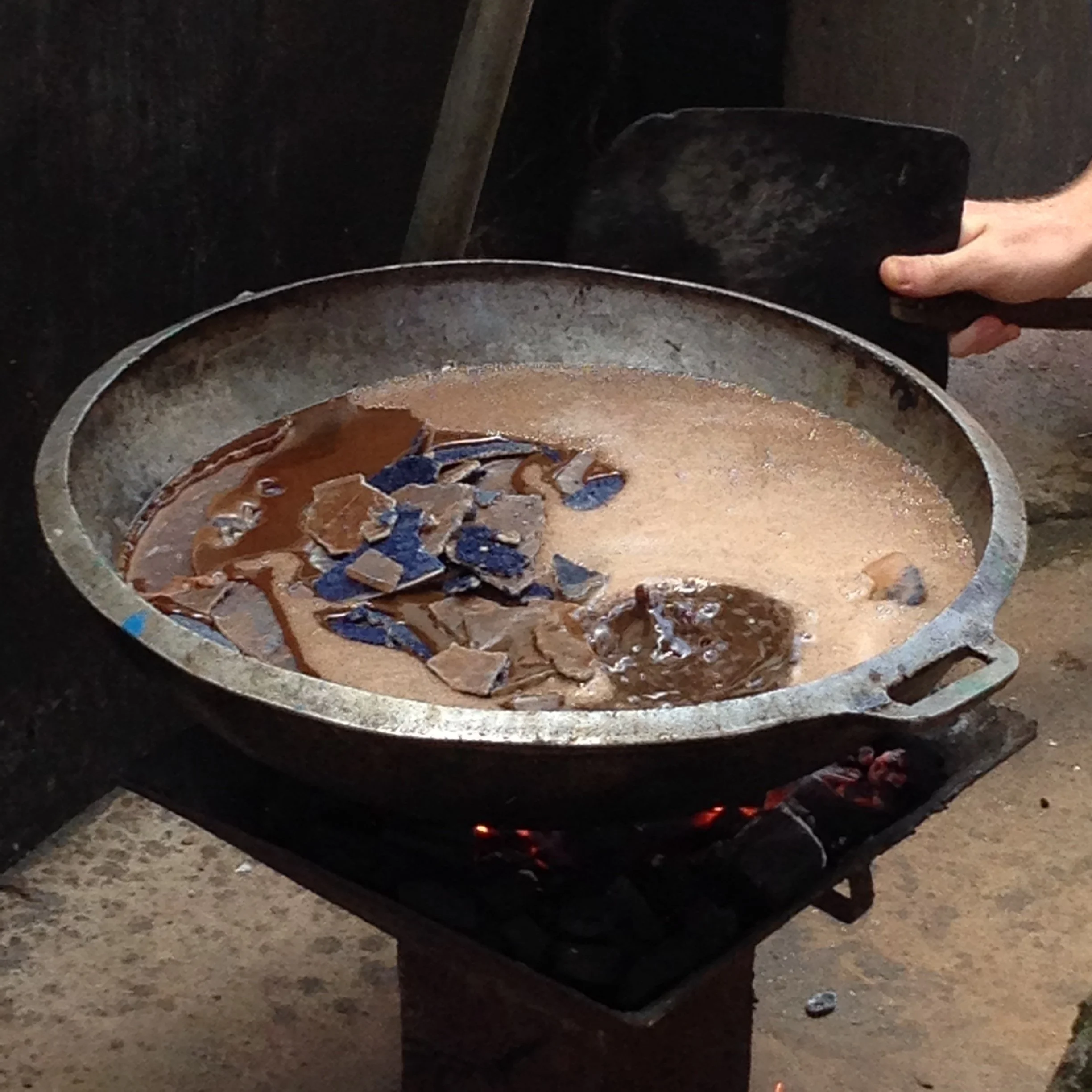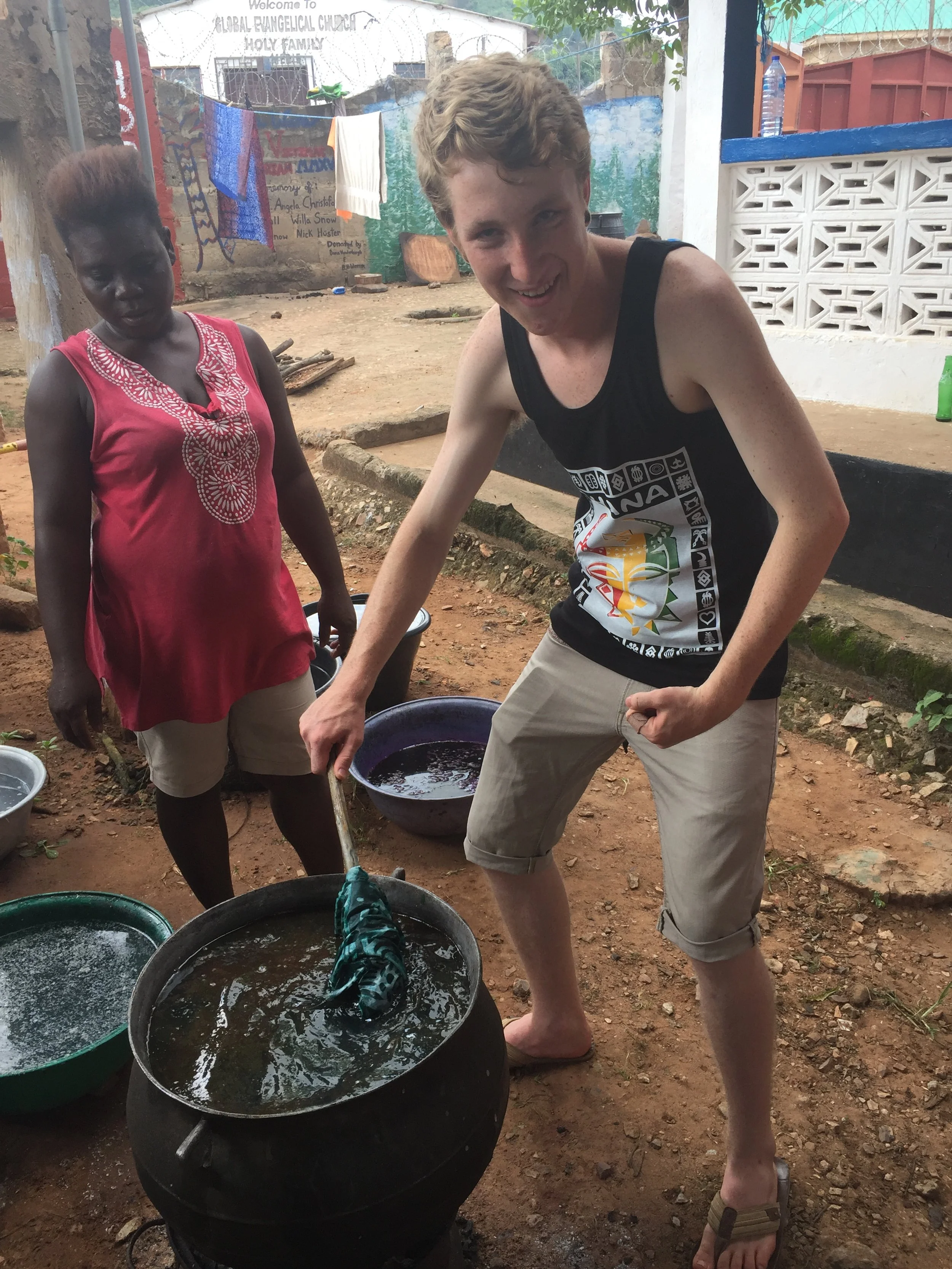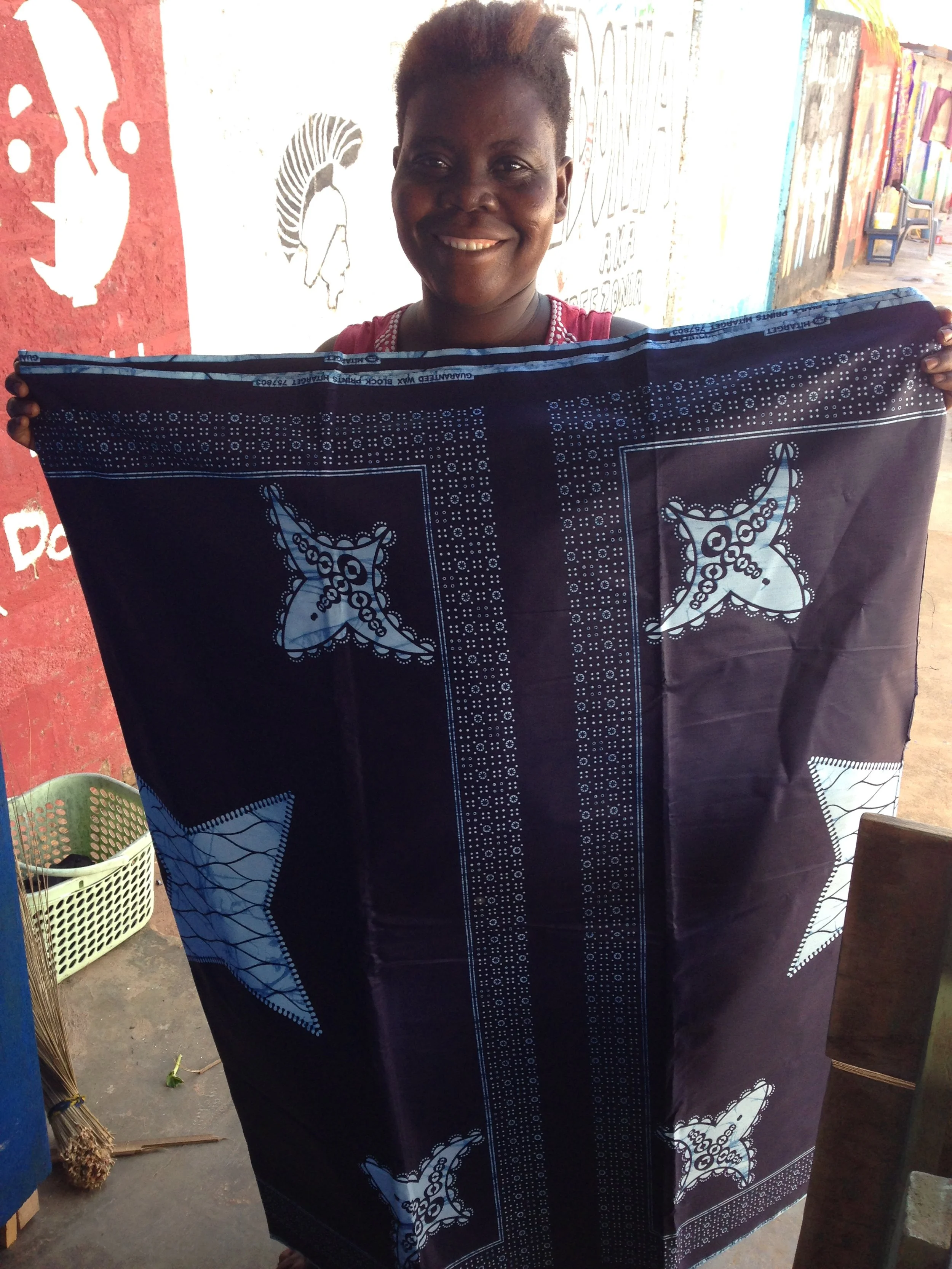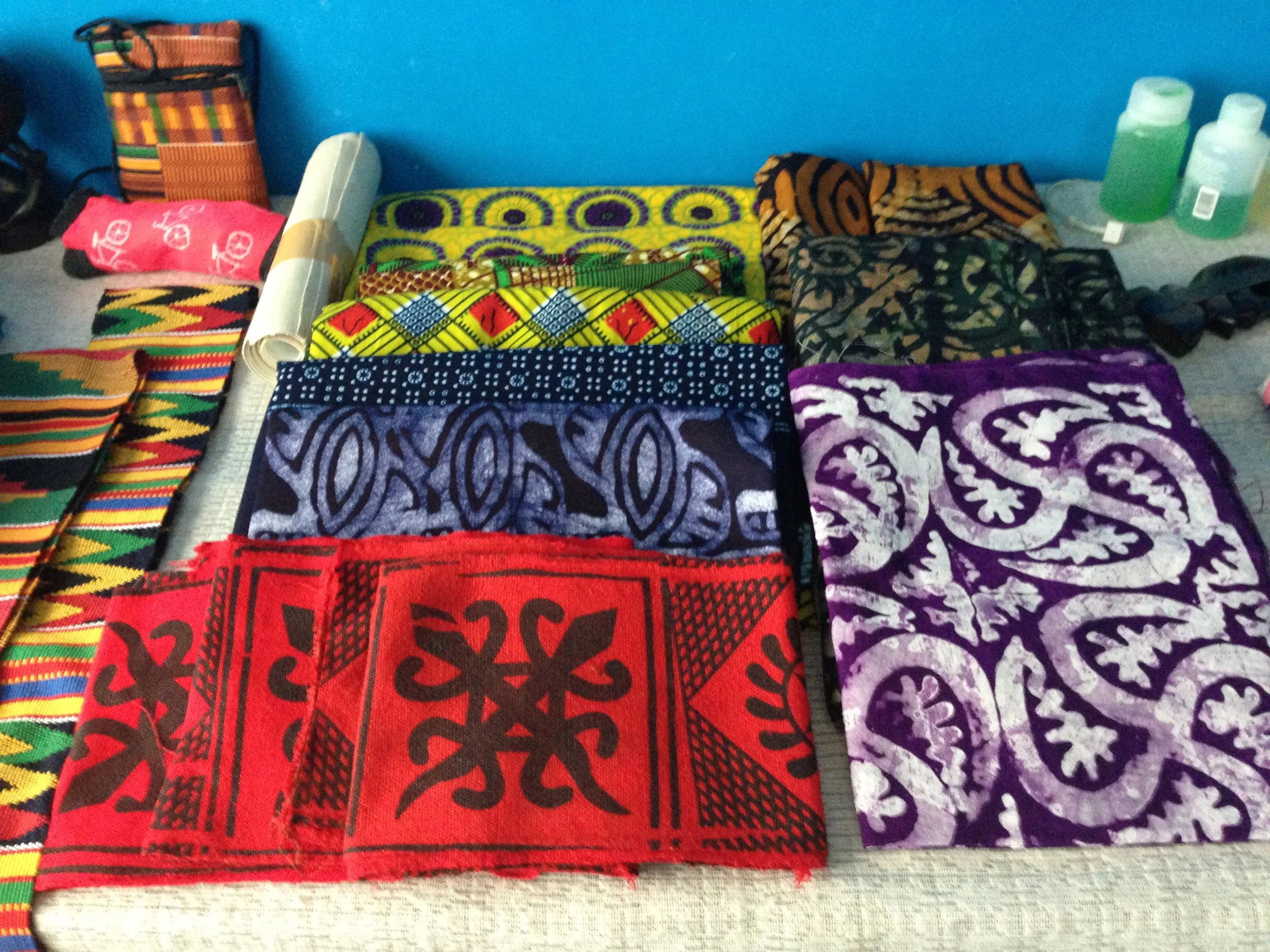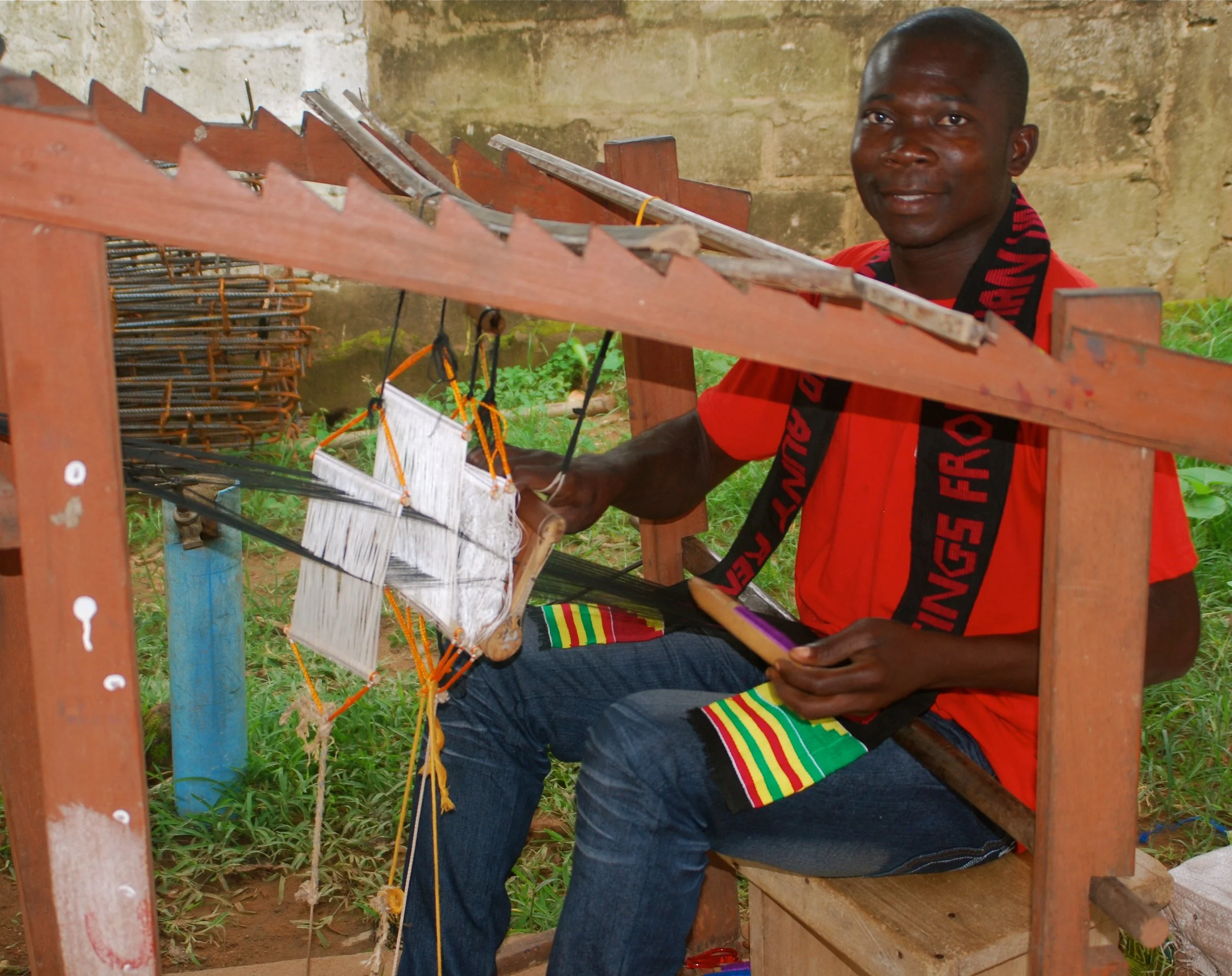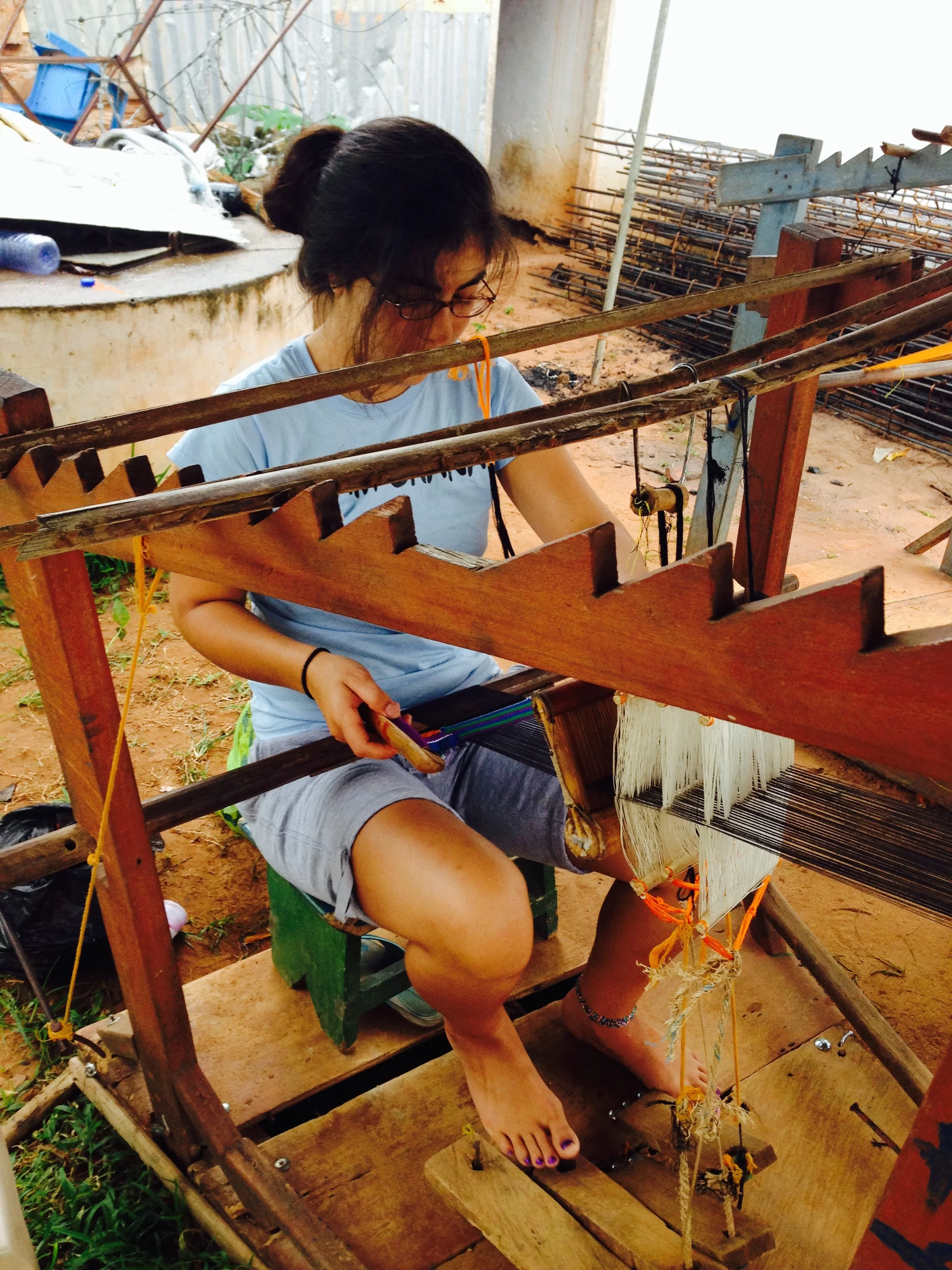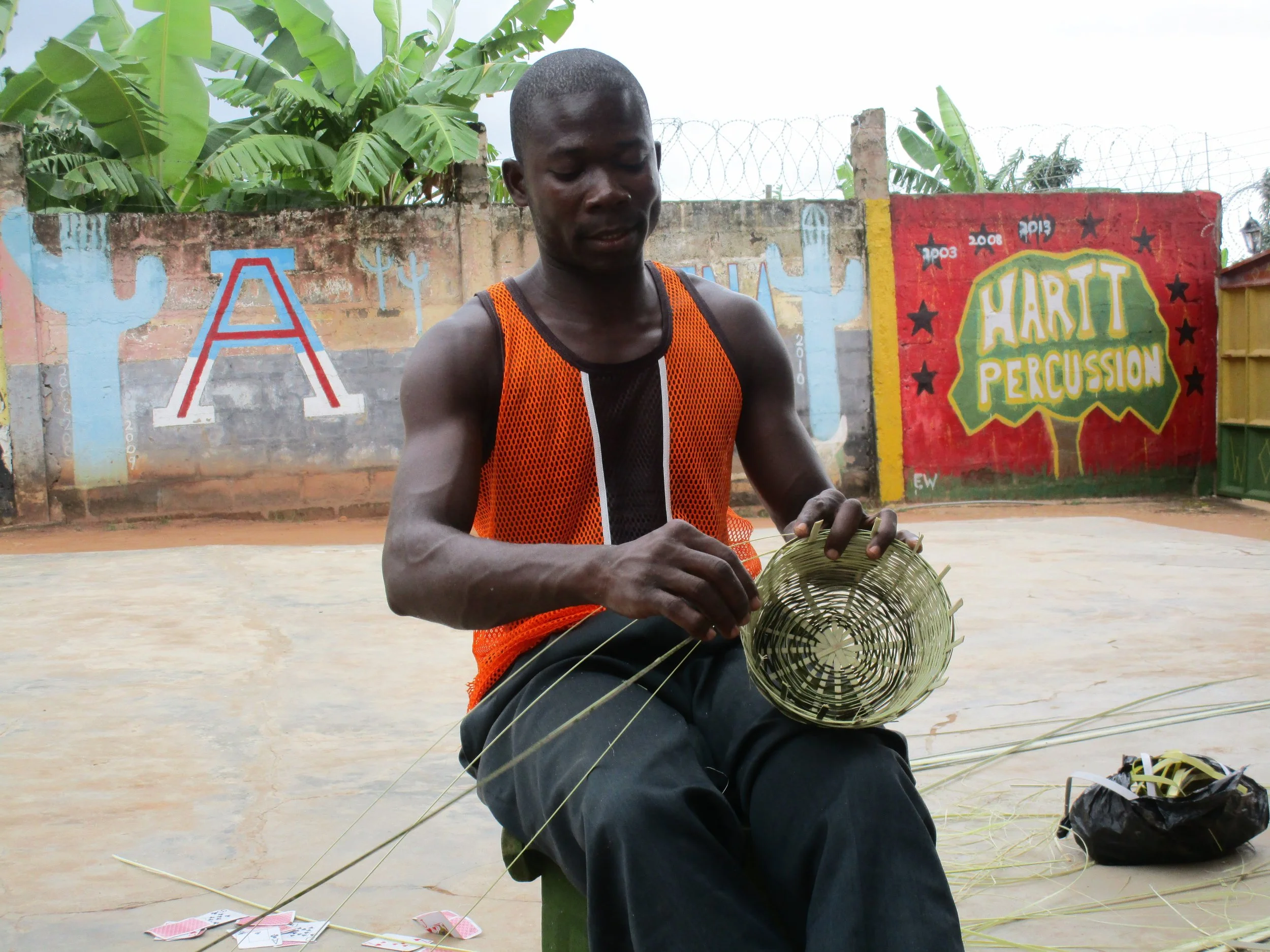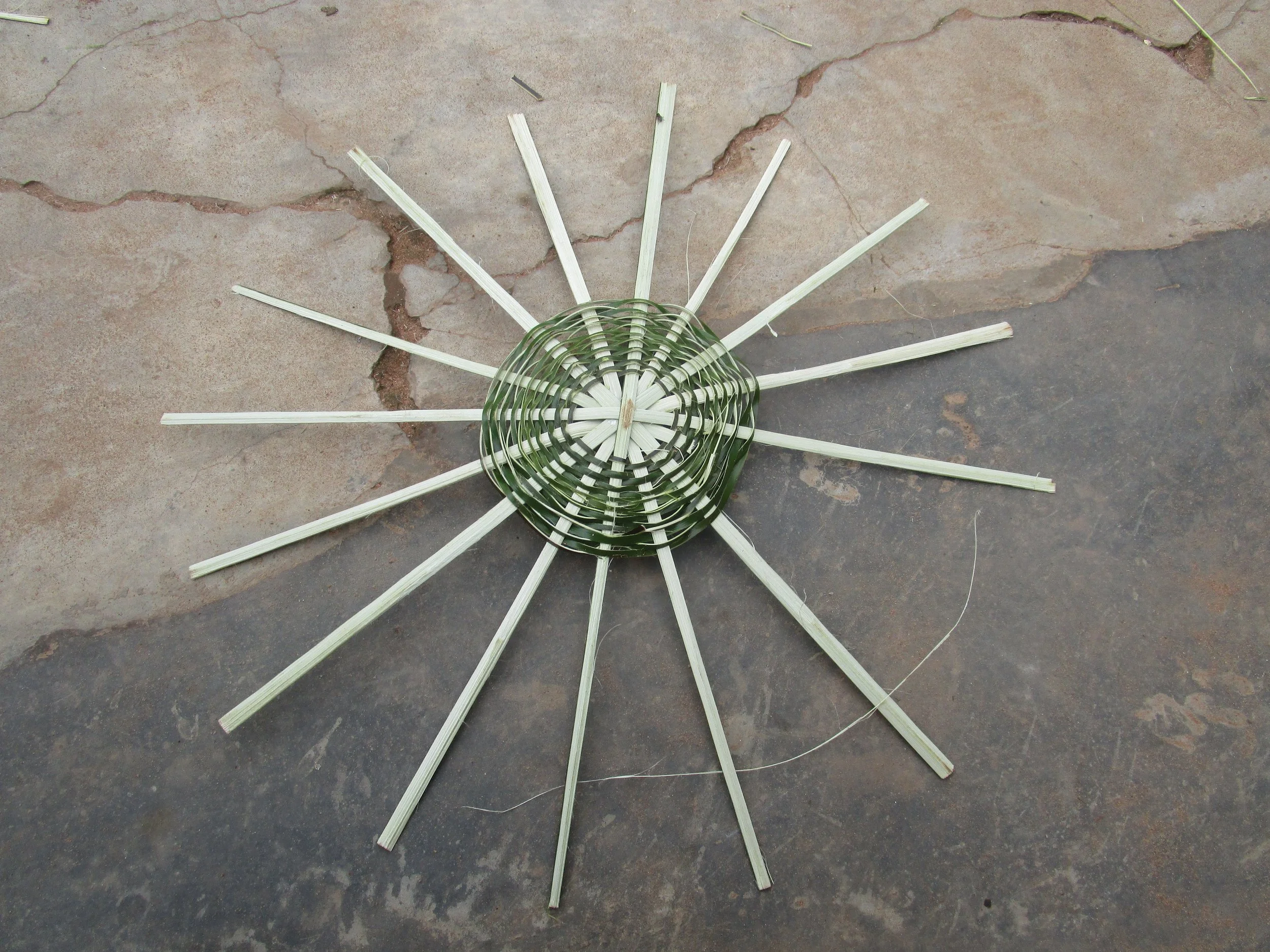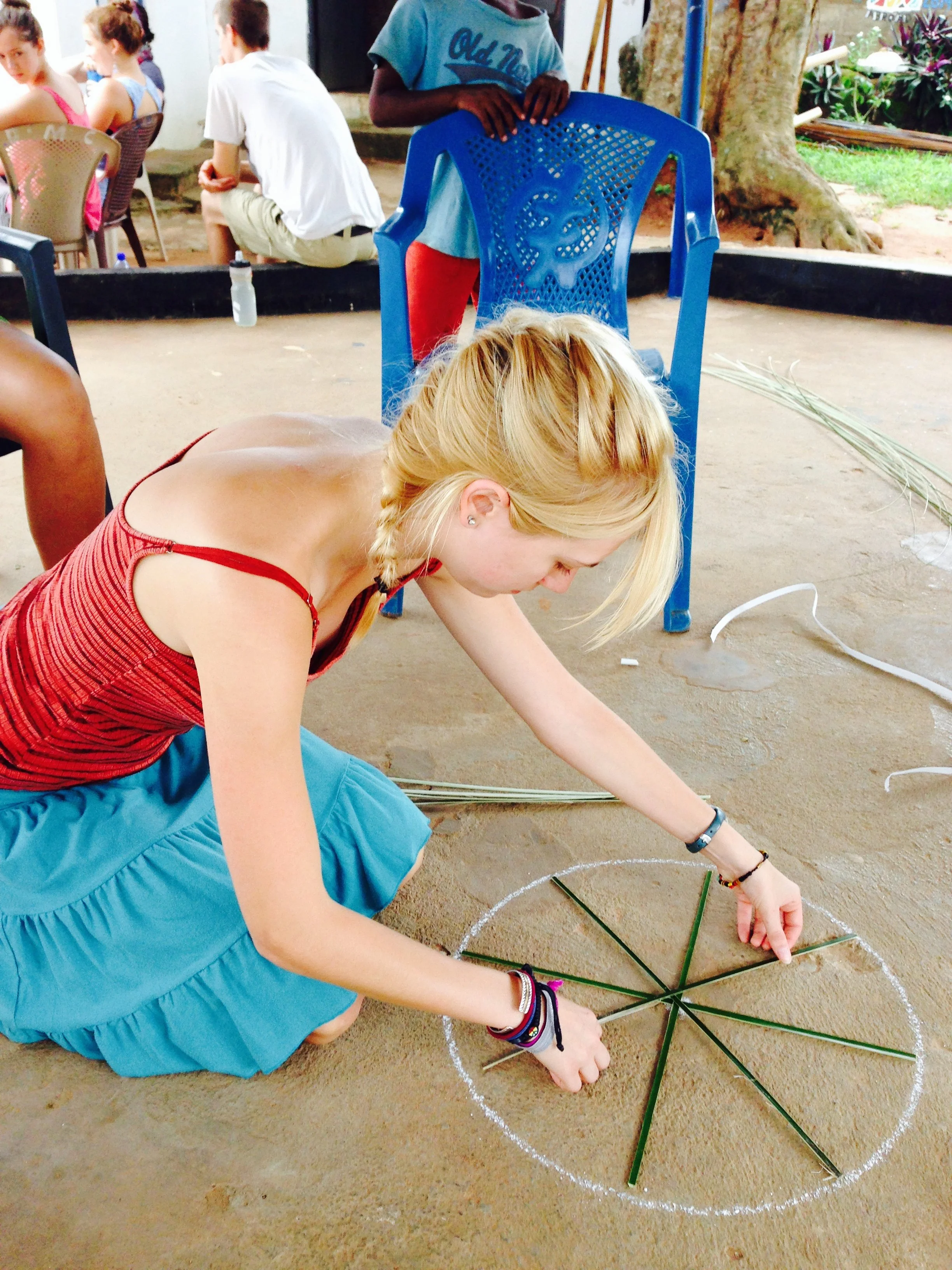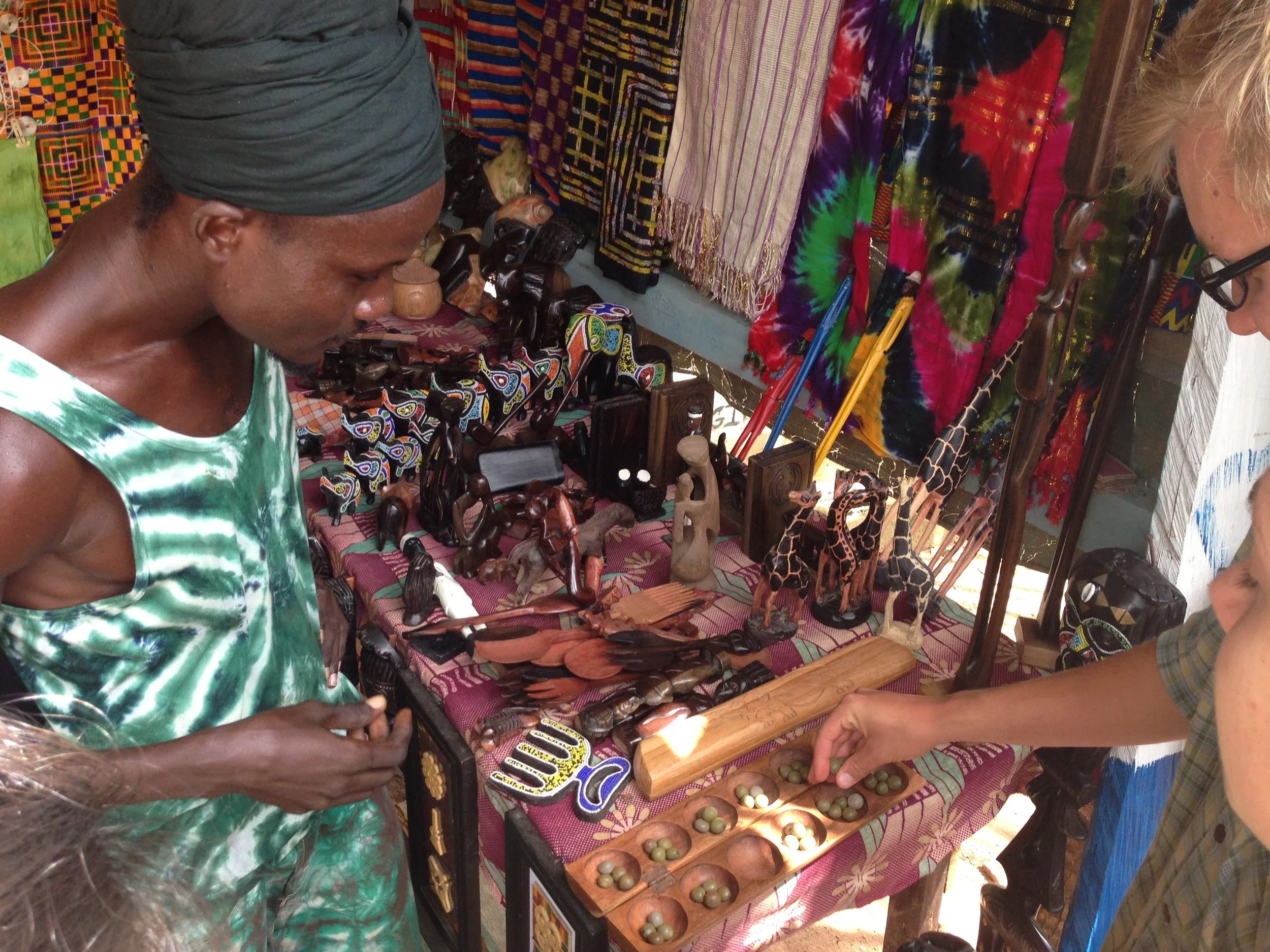Folk Arts of Ghana
Adinkra Symbols
Adinkra symbols are everywhere in Ghana. The symbols are reflective of values originating in the Asante cultural group, and have expanded throughout Ghanaian culture. They are traditionally used in embroidery, cloth stamping, and other folk arts, and are often employed for their symbolic effect across various life activities. Several common symbols are Gye Nyame (“Except God,” implying the omnipotence of God), Sankofa (“Return and Take,” symbolizing a return to roots, and often adopted by African Americans), and Ntesie/Matemasie (“I have heard it and hid it in my head,” a symbol of knowledge and wisdom). An online archive of Adinkra symbols is here. Students at the Dagara Music Center have the opportunity to try batik fabric stamping with Adinkra symbols, alongside tie-dye, another traditional fabric art practice.
Kente Cloth
Kente is another source of deep symbolism from the Asante Kingdom, a tradition that weaves symbolism into narrow cloths that can be stitched together. Some designs are unique to the Asantehene (Asante King), or indicate social status or clan. Some designs are symbolic of cultural values, similar to the Adinkra symbols. A summary of kente cloth designs and meanings is here.
Bolga Baskets
Bolga Baskets originate in Bolgatanga in Northern Ghana, and are preserved today as a traditional basket weaving practice and art form of the indigenous Gurune/Frafra ethnic group. Students at the center were offered basic lessons in basket weaving.
Beads and Masks
Beads have a long artisanal tradition and have a symbolic role in Ghanaian culture as well. They often accompany stage-of-life rituals and customs. At the center, we learned about waistbeads, a tradition that begins with baby girls and portrays femininity and virtue throughout the lifespan. Masks, like most traditional visual art forms in Ghana, also carry symbolism and represent the cultural variety of diverse Ghanaian ethnic groups.

